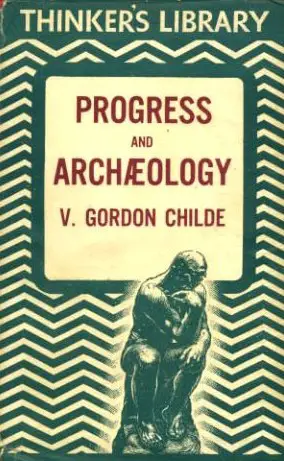Archaeology has come a long way. It is a developing field that improves every day, and newer and better tools and instruments have come along as well. In the last few decades, archaeology has attracted more students than before. When things are going so well, only one question remains: How do you improve yourself so that you do not feel like you’re falling behind others?
Reading is not only for literature students – it is for everyone. As an archaeologist, a good amount of reading will keep the ideas flowing.
Progress and Archaeology by Vere Gordon Childe

Check the current price on Amazon here.
Progress and Archaeology by Vere Gordon Childe was published in 1944. Childe was a great archeologist of his time who specialized in European prehistory. During his career, Childe wrote 26 books. He uses convincing and powerful language to put his ideas forward. Although experts have now shifted from his ideas, this book is still a great read. Childe’s ideas about archaeology still hold an important position today.
Childe believed that progress represented an accumulation of knowledge, whether in society or in a person. And knowledge is always practical. Separation of theory and practice is a barrier to progress.
Cultural-Historical Approach
Initially, Childe believed in a cultural-historical approach, but later he moved to a more liberal approach. The cultural-historical approach was invented in the 20th century and was associated with Gustaf Kossina (a German prehistorian). According to this theory, if you excavated in one place and later excavated on another site 400–500 from the previous one and found the same kinds of pots, blades, tools, and the same way of making these items, then the same kind of people probably lived in both places. Maybe they looked alike and spoke the same language as well.
The problem with this theory is that it doesn’t always work out to be true. If you find a similar-looking artifact in two places, it does not mean that the same people lived there. They could have cultural and traditional differences. For example, if future archaeologists dig a hole somewhere and find a Pepsi bottle, they cannot determine that Americans lived there based on that one factor.
Kossina died right before the Nazis came into power. Nazis used this theory to their political advantage to show the world that they were dominant over all of Europe. Nazis only wanted to prove that the land had belonged to them from the beginning. Even though Kossina’s theory is old, Central Europe has not quite recovered from it. The Czechs, the Slavs – everyone tried to prove they were there before the Germans arrived. Everyone was using the same idea to prove their dominance over the land.
After the Poland invasion in 1939, Polish archaeologists found that pre-Germanic people had come to the land first. These archaeologists were then shot for coming up with this result. Almost 80% of the profession was killed.
Archaeology has the power to shape the world. But if it gets out of control, it can also destroy the world. Even though it is clear who was there first, it does not matter; a lot of people still believe in these old ideas. Childe later moved from this theory towards Marxist theory.
